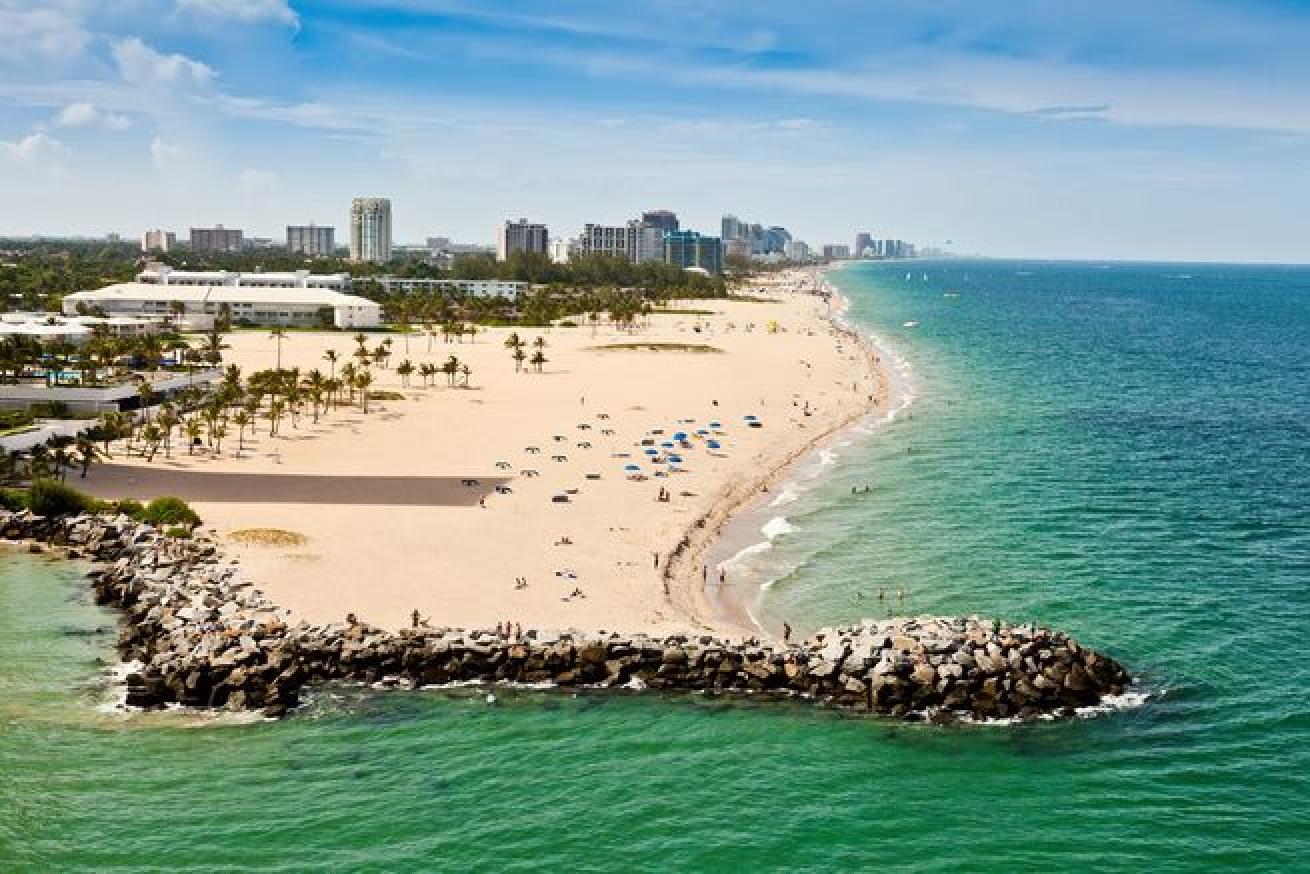Fort Lauderdale
Anguilla's turquoise waters boast seven marine parks: Dog Island, Prickley Pear, Seal Island Reef System, Little Bay, Sandy Island, Shoal Bay Harbour Reef System and Stoney Bay Marine Park. Dive sites include wreck dives, shore dives, mini wall dives, night dives and heritage diving. Anguilla is known for its intentionally sunk shipwrecks. The island is home to a truly unique attraction, a 960-ton Spanish galleon, El Buen Consejo, that rests on the ocean floor with its cannons and cargo serving as a silent testament to the Caribbean's turbulent past. Anguilla also boasts a healthy double reef system, where a wide variety of corals flourish.
Weather: About 80 degrees year-round.
Average Water Temp: Mid-80Fs in summer in the north, dropping to mid-70Fs in winter. Dive season is year-round.
Average Visibility: 100-plus feet.
Travel Savvy: A passport and onward or return ticket is required. Anguilla is 20 minutes north from French St. Martin by ferry. There are a number of options available for getting to the island. Visitors can fly directly into Anguilla's Wallblake Airport from Puerto Rico via American Eagle/American Airlines and LIAT, or opt to fly directly to St. Maarten, Antigua, St. Thomas or St. Kitts for easy transfer to Anguilla
Destination Links: www.anguilla-vacation.com and www.ahta.ai.

ShutterstockFort Lauderdale Beach, Florida
Life in Fort Lauderdale revolves around the water. Often called the "Venice of America," the greater metro area, which stretches from Deerfield Beach in the North to Hallandale Beach in the South, boasts world-class beaches and a busy intracoastal waterway lined with lavish mansions, mega yachts, busting bars, restaurants and other diversions. But while sun worshipers and families savor the sand and the boating crowd prowl the inland waters, divers head just offshore to a bevy of healthy reefs and thriving wrecks that stretch the entire coastline.
Drift diving is the most common style of diving in the area, thanks to the steady flow of the Gulf Stream. The nutrient-rich river of warm, clean water has created local reefs thick with sponges, sea fans and other invertebrates, along with plentiful tropical fish, heaps of eels, large southern stingrays and exciting predators such as Goliath groupers, jacks and several species of sharks. Dive flags are required equipment and it’s always smart to carry an SMB, as well.
Top Fort Lauderdale Wreck Sites
Sea Emperor: The 170-foot hopper barge sits upside down in 75 feet of water. Sunk many years ago as part of Broward County's ongoing artificial reef program, the ship was filled with tons of concrete cylinders and an "Aqua Zoo" was created around the wreck when the tubes spilled out of the falling vessel onto the sand below. Scattered about like oversized Lincoln Logs, the encrusted cylinders bustle with marine life — shoals of grunts cruise through the pipes and sergeant majors fly at intruders to defend coveted spots.
Rodeo 25: This 215-foot Dutch freighter was sunk off Pompano Beach in 1990, and the wreck is now a haven for French angels as big as cafe tables. At 90 feet, the bridge looks out over clear water while a crew of bar jacks, blue tang and bicolor damselfish patrols the ship's lower quarters. The wreck is also home to some pugnacious Goliath groupers that have been known to engage divers in fierce stare-downs.
Copenhagen: Broward's first underwater archeological preserve crashed into the Pompano Drop-off in 1900 during a storm. Until WWII much of the wreckage was still above water. It was blown apart to prevent German U-boats from hiding behind it. Although the hull collapsed years ago, there is still a ton more marine life surrounding the site.
Mercedes: This 190-foot wreck received national attention in November 1984 when a Thanksgiving storm caused her to crash into a seawall next to the Kennedy estate in Palm Beach. The wreck now sits in about 85 feet almost due east of Sunrise Boulevard.
Tenneco Towers: Made up of four massive sections of old oil platforms –– it was originally five, but a hurricane reduced the shallowest tower to rubble –– the towers is considered the largest artificial reef in southeast Florida. The prolific soft-coral growth and large pelagics that circle the towers make it a local favorite. Two of the towers are within recreational limits, the other rest at about 190 feet.
Capt. Dan: This 175-foot former Coast Guard vessel was prepared as an artificial reef with large access holes for easy penetration and sunk in 1990. It remains intact with the deck coming into view at about 90 feet.
Diving Conditions
Diving is excellent year-round, with water temperatures ranging from the low 70s in winter to the mid-80s in summer. Visibility ranges from 40 to 100 feet, depending on weather and wind. The best conditions occur August through October.
DIVE DEALS
PARTNERS Divers Direct










